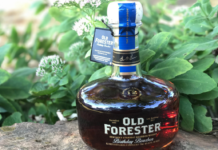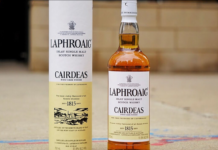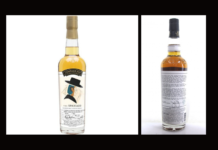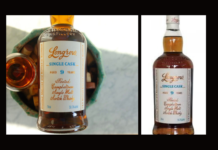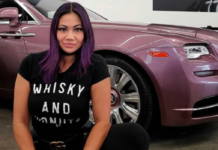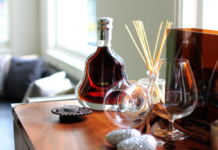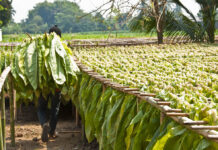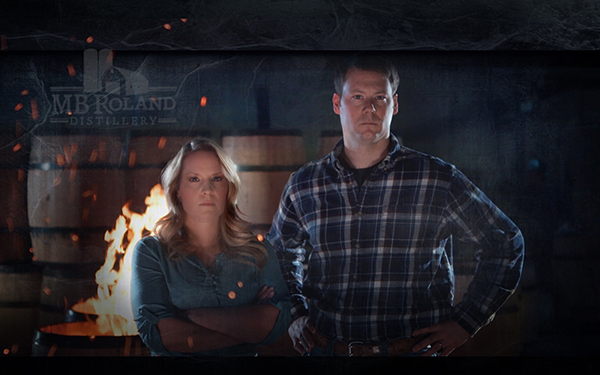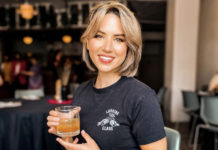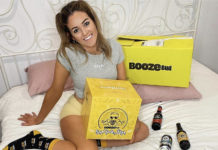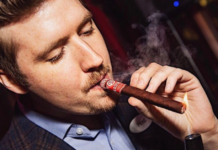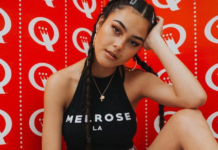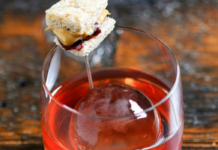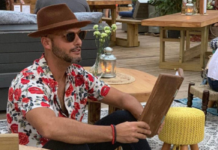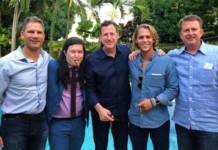MB Roland Distillery is a completely “grain to glass” craft distillery located in Pembroke, Christian Co. KY. We’re actually outside of town and affectionately refer to our exact location as “downtown St. Elmo.” We use local white corn to hand make each of our products ranging from our very unique “distillation & barrel proof” Kentucky Bourbon to our naturally-flavored Kentucky Pink Lemonade.
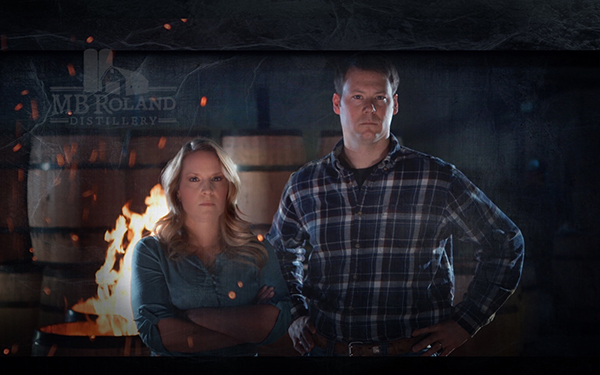 Paul give us a bit about your history. What were you doing before opening up the MB Roland Distillery?
Paul give us a bit about your history. What were you doing before opening up the MB Roland Distillery?
PT: My wife & business partner, Merry Beth Tomaszewski, founded the distillery in 2009. Before that, I was in the Army at nearby Ft Campbell, KY and my wife was a banker. Not coming from money, both of our backgrounds came into use. In my case, my background in working in the government helped with our licensing and organization side of the business. Merry Beth’s background in banking helped us in the accounting and securing funding side of things.
We found a nearby Amish dairy farm up for sale and determined it to be a suitable location for our distillery. In naming the distillery, we went with Merry Beth’s maiden name (MB Roland). The joke she likes to tell people is, “some women drive their husbands to drink, I drove mine to making it!” However, even with a bank loan and a few dollars of our own, we began our operation with a small, 100-gal still. In short order we found out the limitations of that sized operation and upgraded to a 600-gal production capacity in 2014.
What was your vision for MB Roland Distillery?
PT: Our vision has always been as a bourbon/whiskey-focused distillery. That doesn’t mean we were able to do that day 1. It really wasn’t until 2014 when we upgraded our production size that we were able to put away a decent amount of aged product. Today, over 90% of our production goes into barrels. Since our production is approximately 1 (53-gal) barrel per run, we run 3-4 times per week for aged product. Beginning this year, we’re starting to bottle the majority of our product as bourbon/whiskey, so we’re really now growing into our own.
What type of whiskey does your distillery currently produce? Are the ingredients sourced locally?
PT: While we do make several types of whiskey, over 50% of our production is bourbon. For bourbon, we have 3 different mash bills; our flagship bourbon is 78% white corn/17% rye/5% malted barley, our “dark fired” bourbon is 45% white corn/ 33% of our dark fired white corn/ 17% rye/ 5% malted barley, and our wheated bourbon is 75% white corn/ 20% red winter wheat/ 5% malted barley.
We also make a rye whiskey, a malt whiskey, a wheat whiskey, a corn whiskey, and a “dark fired” whiskey using our dark fired grain and aged in our used bourbon barrels. Every few months we also do a once-off “single mash” whiskey of various recipes. The reason we dabble in so many mash bills is because it’s just plain fun. Some of these whiskies may be hard to find as we bottle them, but we learn a lot as we change things up. Our grains are over 95% locally sourced. Both our corn and wheat are grown here in Christian County, our rye is from Kentucky, while our malted barley is from the upper Midwest.
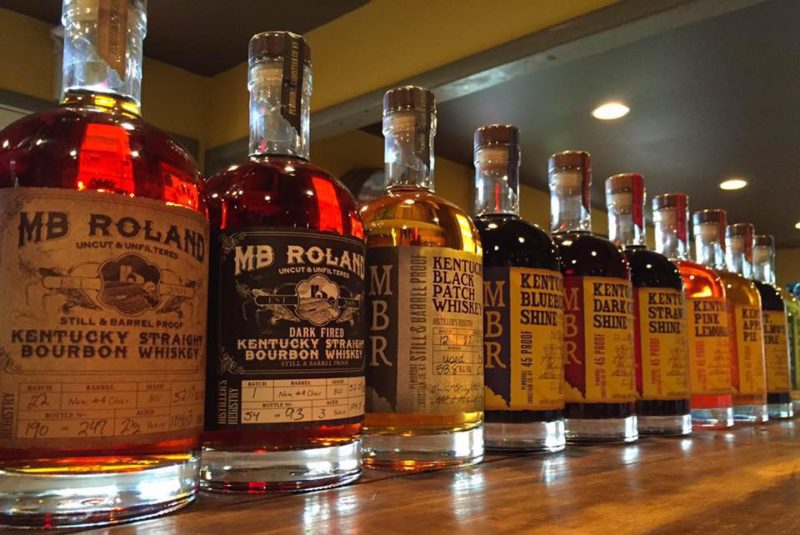 Paul, what are your maturation conditions like? Does the geography and weather influence the maturation process?
Paul, what are your maturation conditions like? Does the geography and weather influence the maturation process?
PT: Currently, our aging is in the hayloft of the former Amish dairy barn. It’s elevated, making it great for aging. Also, this part of Kentucky is a bit warmer and a tad bit more humid than in Central Kentucky where most of your bigger KY distillers are, so you do get a bit more seasonal/day-to-day shift. Our barrels are air-seasoned vs. kiln-dried. That means that, before the cooper builds the barrel, the wood itself is seasoned for up to 2 years. This makes a big difference on the spirit as some of the less desirable tannins leach out of the wood and the wood sugars are picked up by the spirit in the aging process a bit quicker.
Paul, for those of us who have no background in chemistry, can you briefly walk us through the distilling process, from the grain to the glass?
PT: We’re unique, to say the least. We double pot distill, but there’s more to it than that. We purposely run our spirit so that it comes off the second (spirits) distillation at around 110 proof. That’s low, but it also means more flavor. We then put the spirit directly into the barrel for aging. Then, after aging, the spirit is dumped uncut and unfiltered for bottling. This makes for a very flavorful whiskey that has all of the flavor and oils from the aging process.
Can you tell us about your manufacturing warehouse, what type of stills you use, casks, any other equipment to make your whiskey?
PT: Our stills are a 600-gal stripping still and 300-gal spirits still. Both were made by Trident Stills in Maine. They are pure pots with very little reflux, by design. The idea is that we’re not making vodka or gin, we’re making whiskey and we want flavor. See above for the barrels.
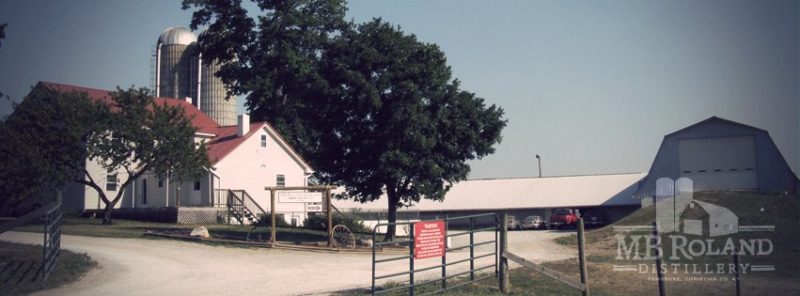 What advice would you give anyone who is looking to get into this market?
What advice would you give anyone who is looking to get into this market?
PT: Make sure you have a true passion for crafting whiskey/spirits. Even after 8 years and the ups and downs of our business (and still just trying to make a living), I still love the mashing, fermentation, distilling, and aging of the spirits, it’s just fun to be around it. However, this is a business, and it happens to be a very unique one that requires a lot of investment. That investment could be a lot of money and time, or it could be some money and a lot more time (and more money during that time!). For Merry Beth and I, we’re looking at year 8 and still probably have another year or two until we can say we’re earning a normal living from this. It takes time.
Can you tell us what your day to day currently looks like?
PT: I typically check on the distillery to start the day, then get to any administrative things like e-mails, phone calls, marketing projects. Some days I might spend on the road doing tastings/events, others I’ll spend working on odd projects on the property. Over the years I’ve picked up quite a bit of experience in just about every handyman skill you can think of. I jokingly refer to myself as the “Special Projects Officer.” I try to work in the distillery itself a few times a month to make sure I’m up to speed on how things are going, but, at this point, I wear many hats.
Do you have any role models in this industry? Maybe someone you look up to, or who has been there to help you along the way?
PT: To me, Jimmy Russell is a true rockstar master distiller. He’s a very endearing, genuine person, and I really respect the integrity of his products and how he’s been instrumental in bridging the past generation of larger producers to now. I also pay a lot of respect to Bill Samuels, Jr. at Maker’s Mark because they (Maker’s) really were the original craft distillery. Bill made bourbon/American whiskey craft when craft wasn’t cool and the rest of the industry followed suit with single barrel, barrel proof, and small batch products. I believe every craft distiller should appreciate what Maker’s Mark did for the overall American whiskey market.
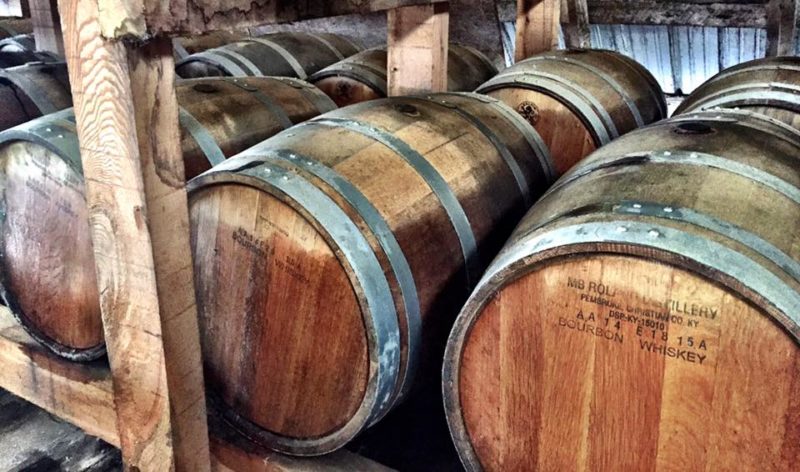 Do you guys believe now is the most exciting time for a whiskey lover?
Do you guys believe now is the most exciting time for a whiskey lover?
PT: I don’t, that time is still ahead of us! In the next 5-10 years, it’s really going to be a fun time to be a fan of whiskey as many craft producers are putting out their aged whiskies.
How are you standing out in this “craft niche” market.
PT: From the beginning, we’ve focused on some particular production techniques that make us stand out. Our local grains, particularly our white corn, pot distillation, aging at distillation proof, bottling at barrel proof, and no filtration other than taking out the chunks of char. It truly is a pre-prohibition style whiskey.
Paul, what was your first dram, is there a story behind it?
PT: My older brother poured me a glass of Glenlivet 15 yr French Oak Reserve and, at that point, I fell in love with whiskey. Bourbon came later when I moved to Kentucky, and obviously took a front seat to other whiskies once I got into it. I still love Scotch & other whiskies, but obviously bourbon is unique. Call it home team pride being that I live in Kentucky, but nothing can quite compare to bourbon and rye whiskey for me.
What are your hopes for the distillery 5 years from now?
PT: Simple, continuing to make good bourbon & whiskey, making a decent living, and continuing to enjoy what I do. We’ll continue to grow each year, how fast is up to how successful we are.
Describe your whiskey in 3 words.
PT: Uncut, Unfiltered flavor.





